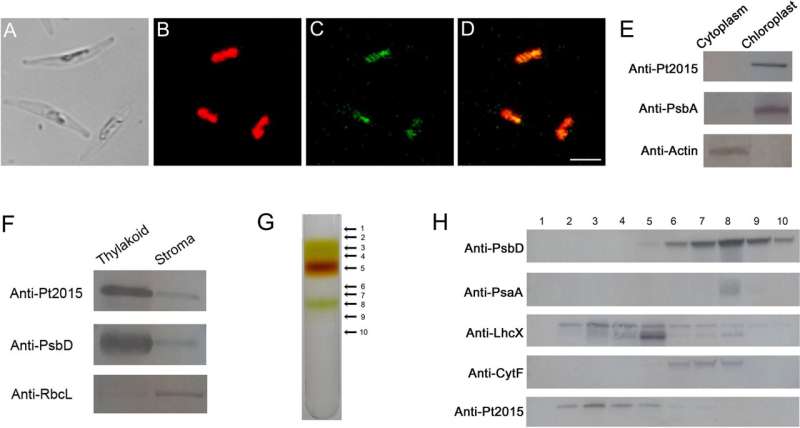Overexpression of gene endows diatom P. tricornutum with high lipid content and grazing resistance

Phaeodactylum tricornutum is a commercially important species that is widely used in aquaculture. It also has the potential to be used as biofuel.
However, contamination of algivorous microzooplankton has been one of the main constraints in P. tricornutum large-scale cultivation. Therefore, isolating a new strain with grazing resistance is important for overcoming zooplankton contamination.
Recently, a research team led by Prof. Wang Guangce from the Institute of Oceanology of the Chinese Academy of Sciences (IOCAS) has revealed that overexpression of a novel gene Pt2015 enables the P. tricornutum high lipid content and grazing resistance.
The study was published in Biotechnology for Biofuels and Bioproducts on Nov. 26.
The researchers used CRISPR/Cas9 gene editing technology to knock out Pt2015, and found that there was no significant difference between Pt2015KO (Pt2015 knockout line) and wild type in cell morphology and growth.
While, the overexpression of Pt2015 could lead to the transformation of cell morphology of P. tricornutum from fusiform morphotype to triradiate morphotype with special spatial structure, indicating that Pt2015 protein is a positive trigger factor for the transformation of cell fusiform to triradiate of P. tricornutum.
The economic characteristics of the triradiate strain caused by overexpression of Pt2015 were extremely stable. The triradiate strain demonstrated a three-dimensional three radial pattern, and had obvious resistance to the algivorous microzooplankton (amoeba), said Prof. Wang.
“Moreover, the total lipid content in triradiate strain cells was about 30% higher than that of the wild type, and the growth rate was no different from that of the wild type,” said Gao Shan, first author of the study.
More information:
Shan Gao et al, Overexpression of a novel gene (Pt2015) endows the commercial diatom Phaeodactylum tricornutum high lipid content and grazing resistance, Biotechnology for Biofuels and Bioproducts (2022). DOI: 10.1186/s13068-022-02221-y
Citation:
Overexpression of gene endows diatom P. tricornutum with high lipid content and grazing resistance (2022, December 14)
retrieved 14 December 2022
from https://phys.org/news/2022-12-overexpression-gene-endows-diatom-p.html
This document is subject to copyright. Apart from any fair dealing for the purpose of private study or research, no
part may be reproduced without the written permission. The content is provided for information purposes only.
For all the latest Science News Click Here
For the latest news and updates, follow us on Google News.

